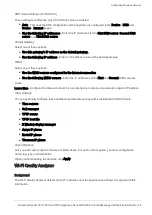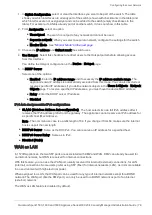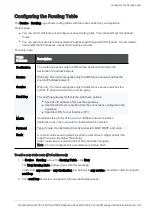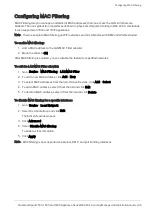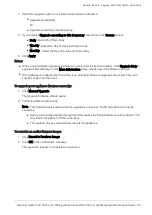
Configuring the Local Network
Quantum Spark 1500, 1600 and 1800 Appliance Series R80.20.40 Locally Managed Administration Guide | 87
Default Gateway
Select one of these options:
n
Use this gateway's IP address as the default gateway
n
Use the following IP address
- Enter an IP address to use as the default gateway.
WINS
Select one of these options:
n
Use the WINS servers configured for the internet connection
n
Use the following WINS servers
- Enter the IP addresses of the
First
and
Second
WINS servers.
Lease section
Lease time
- Configure the timeout in hours for a single device to retain a dynamically acquired IP address.
Other Settings
You can optionally configure these additional parameters so they will be distributed to DHCP clients:
n
Time servers
n
Call manager
n
TFTP server
n
TFTP boot file
n
X Window display manager
n
Avaya IP phone
n
Nortel IP phone
n
Thomson IP phone
Custom Options
Lets you add custom options that are not listed above. For each custom option, you must configure the
name, tag, type, and data fields.
BOND
Bonding, also known as Link Aggregation, is a process that joins two or more interfaces together. It
improves performance and redundancy by increasing the network throughput and bandwidth. The LAN
Bond can be an unassigned network or a cluster interface.
Use Case
Link Aggregation binds two or more physical ports together to form a LAG (Link Aggregation Group) bundle
that results in higher bandwidth and link redundancy. If one link in the group fails, traffic is automatically
routed through the remaining interfaces.
To create a BOND (LAN):
1. In the
Local Network
page, click
New
and select
BOND (Link Aggregation)
.
The
New BOND
window opens.


